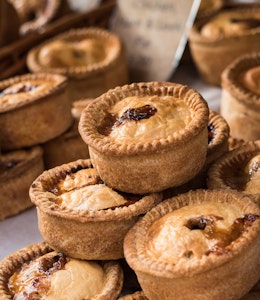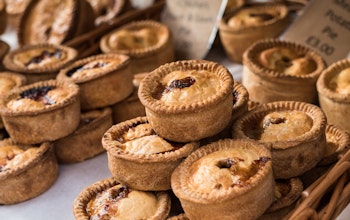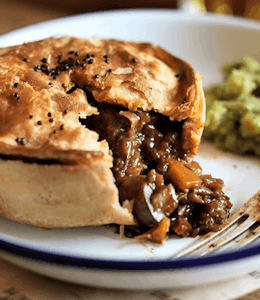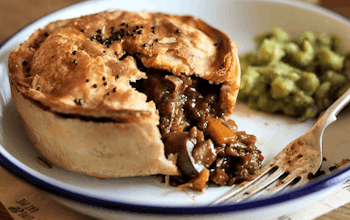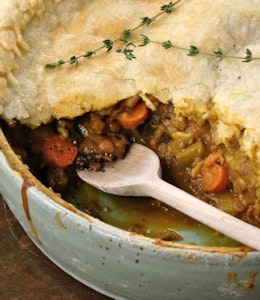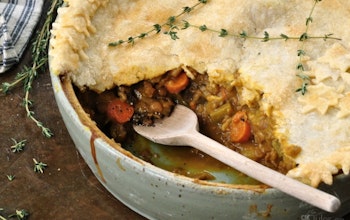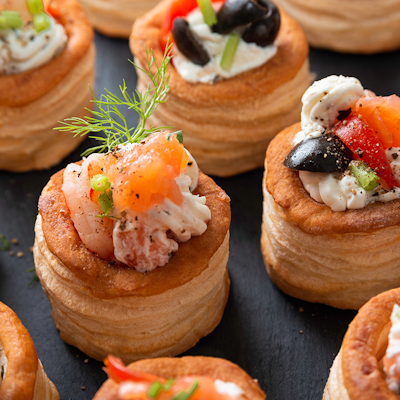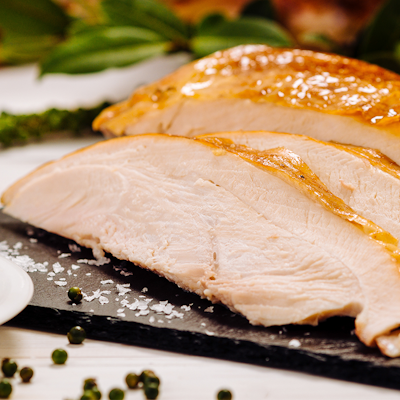The different types of pastry
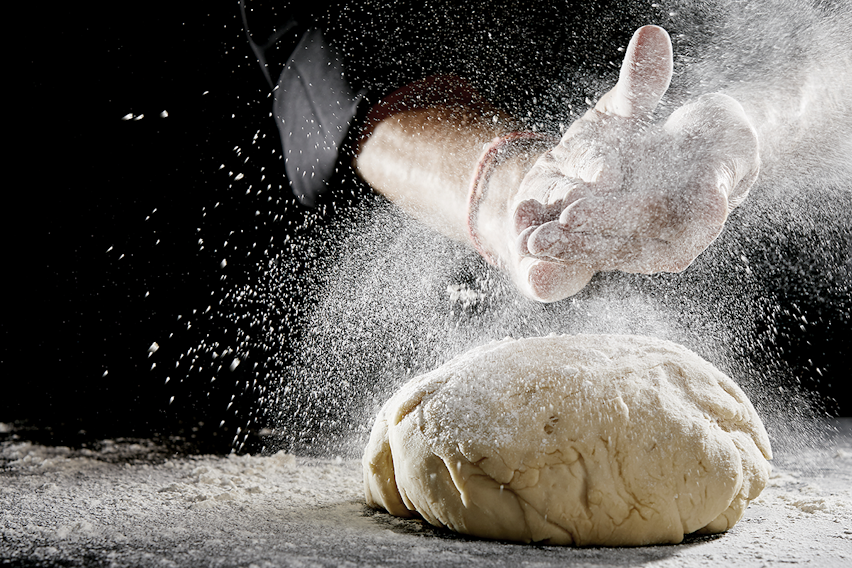
Do you know the different types of pastry names? If you don’t you’re probably also unaware what type is best for your pies, tarts, canapés and quiches. But don’t worry, our list of the different pastries is here to explain all…
The different types of pastry are:
- Choux
- Filo
- Flakey
- Hot water crust pastry
- Puff
- Shortcrust.
- Suet crust pastry
Now let’s find out their ingredients and what they’re best used for:
Choux pastry
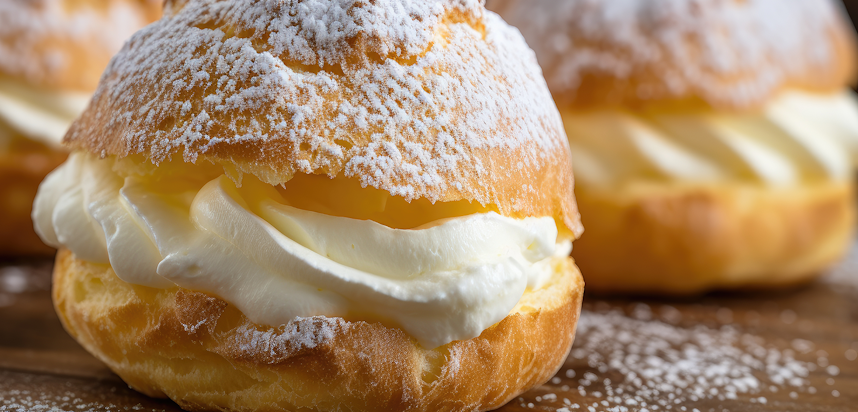
What is choux pastry?
Choux pastry is a pastry (dough) of French origin also sometimes referred to as pâte à choux. One of the more fragile and delicate pastry types, its main ingredients are butter, water, flour and eggs.
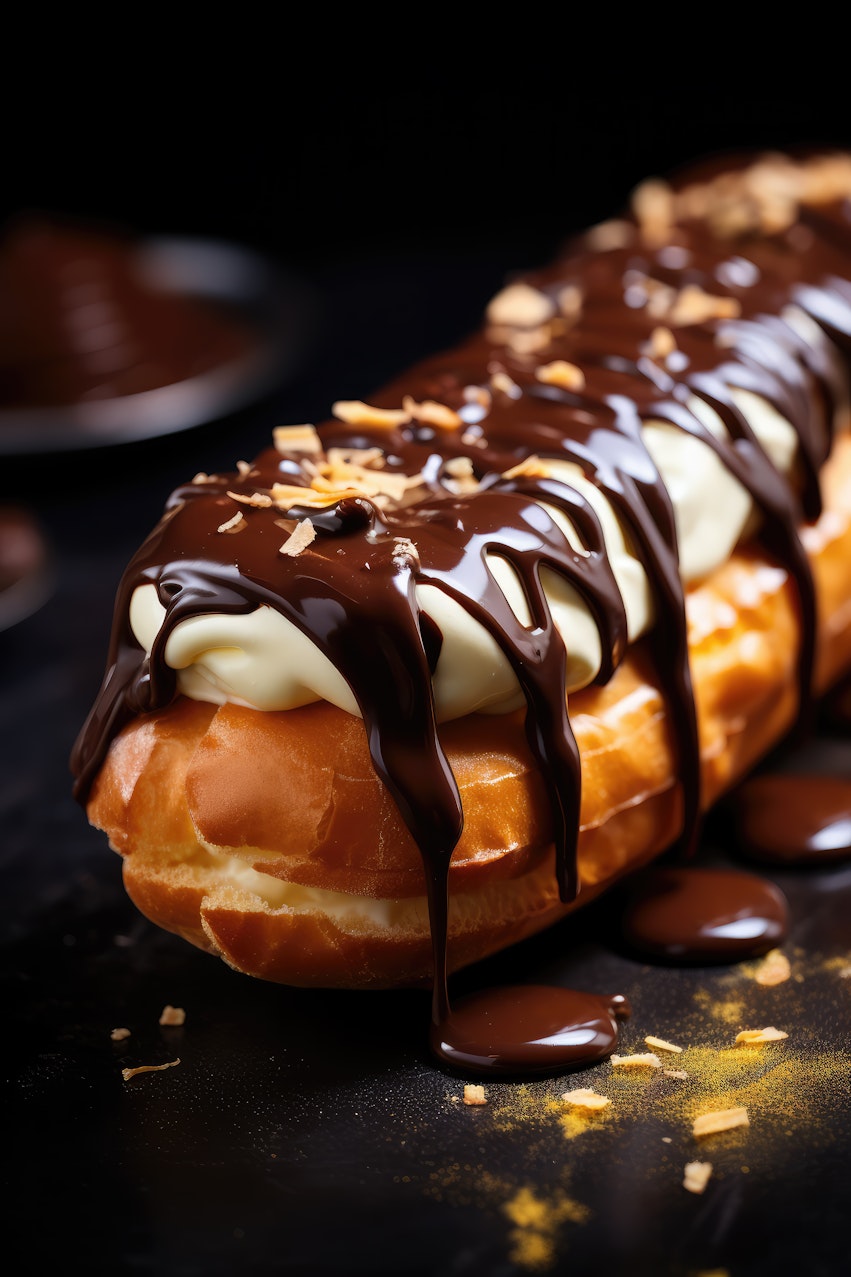
Like several other pastries, it does not contain a raising agent, but instead relies on a high water content and a process of steaming to puff up the pastry. The butter and water are boiled together before adding flour, and later eggs, to the mix. Once in the oven all the moisture in the dough evaporates - expanding the pastry as it does so.
Choux pastry is best for...
Many French pastry desserts including choux (little pastry puffs), profiteroles, croquembouches, éclairs, beignets, and St. Honoré cake. The traditional Spanish, Portuguese and Mexican fried dessert churros are also made using choux pastry.
Choux pastry top tip...
Timing and precision is everything with choux pastry - make sure all of the butter has been melted into the water, and that the liquid has sufficiently reached boiling point before adding the flour.
Filo pastry
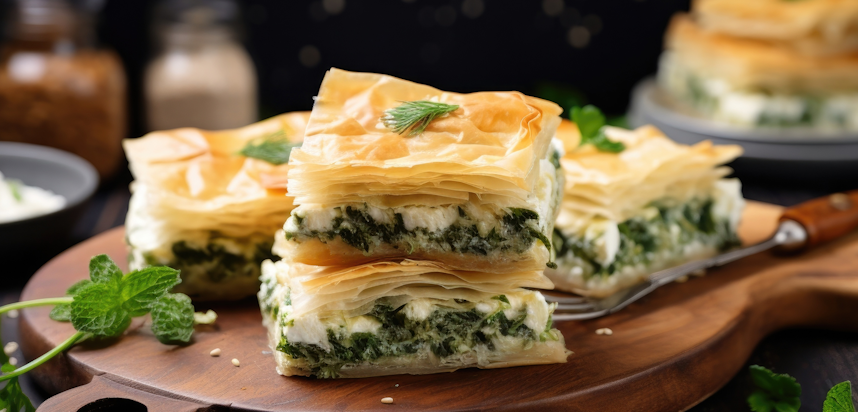
What is filo pastry?
Also spelled “phyllo”, filo pastry is a dough made primarily from water and flour, and also a small amount of oil for brushing. Since it does not contain a raising agent in its ingredients, it is “unleavened”.
Filo pastry is known for being extremely thin, and baked in layers, with the dough being stretched as much as possible after kneading (it should be almost transparent by the end).
Unlike the also airy puff pastry or choux, filo is not made using butter, meaning it contains less fat and calories than other types of pastry - though this also means it can dry out easily.
Filo pastry is best for...
Balkan and Middle Eastern desserts such as baklava and börek. Filo pastry can also be used to make small parcels with fillings such as spinach and feta cheese.
Filo pastry top tip...
Because the dough is made using only flour and water, filo pastry can be dry.
You may also be interested in…
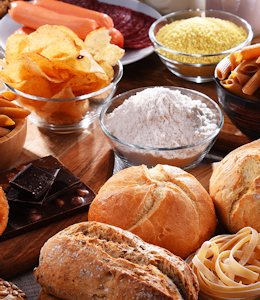
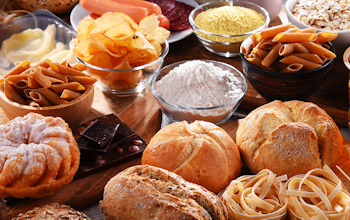
You may also be interested in…
Allergen Deep Dive: Cereals containing Gluten
ReadBrushing the dough with melted butter will not only prevent this, but it will keep the thin layers of pastry separate so they are flakey and not clumped together.
Flaky pastry
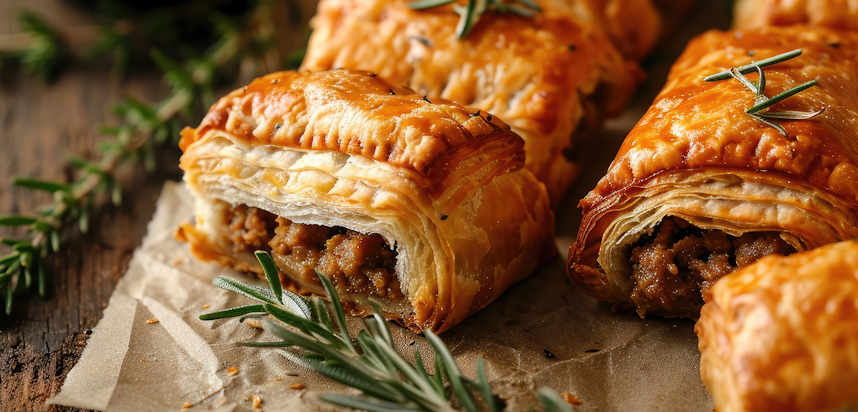
What is flaky pastry?
Considered the “quick” pastry, flaky pastry doesn’t take long to make (hence why it’s sometimes known as “rough puff”) and is made from an unleavened dough.
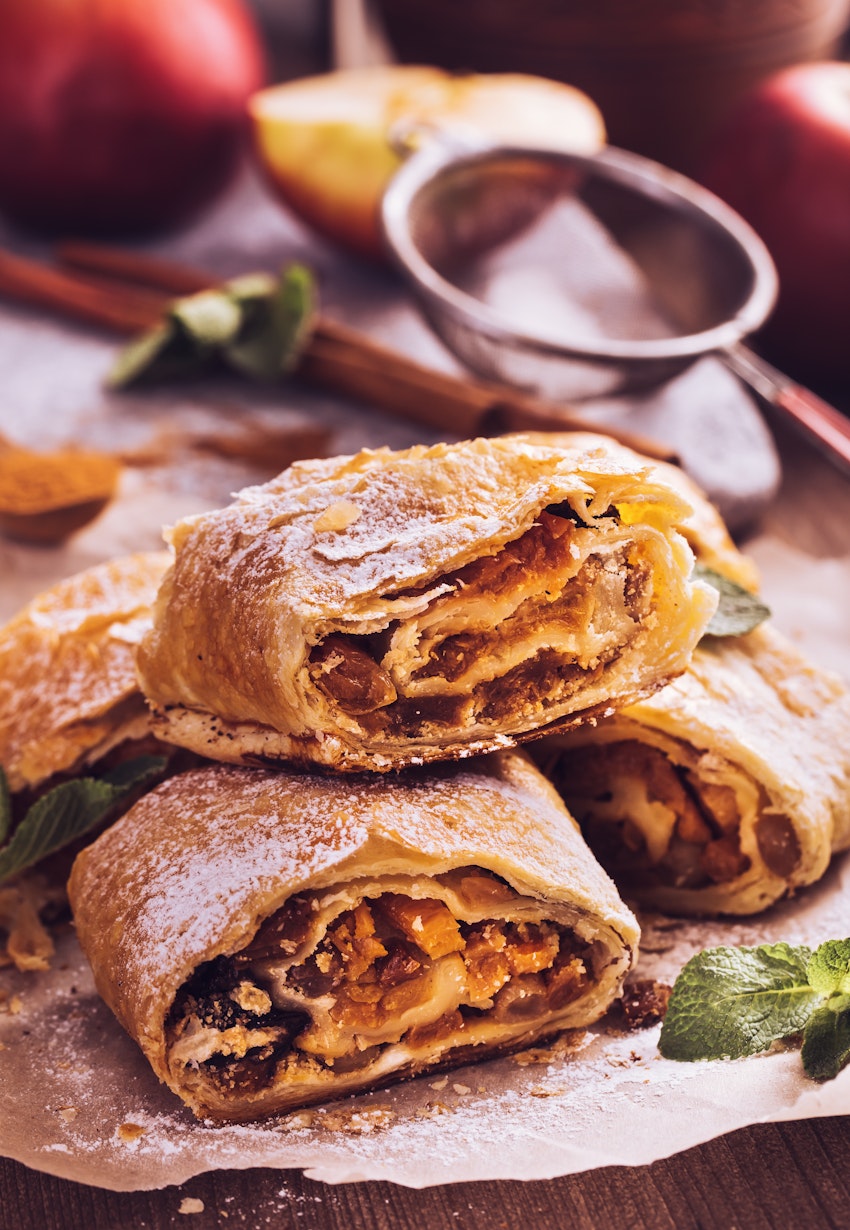
It is made by adding lumps of butter or coarsely grated butter to sifted flour and a small amount of salt. Water is then added to the mixture and the whole thing is brought together until a dough is formed.
When the dough is baked the water in the butter melts, turning into steam and separating the rolled out dough to create flaky layers.
Flaky pastry is best for...
Sausage rolls are famously made with flaky pastry, as are many pasties, plaits and other sweet and savoury pastries.
Flaky pastry top tip...
It’s important for flaky pastry to be very cold before it goes into the oven. Cold butter here is key, as it's the water content of the butter that leads to the flaky layers.
Hot water crust pastry
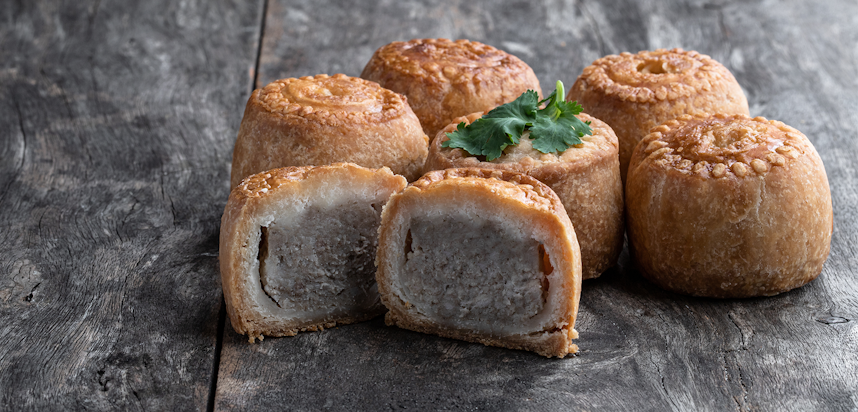
What is hot water crust pastry?
Hot water crust pastry is a uniform and sturdy pastry perfect for filling-heavy pies - due to its robustness. Unlike flaky pastry and other pastries with a crumbly texture, the process of making hot water crust pastry includes totally incorporating fat (usually butter or lard) into the dough by emulsifying it in boiling water. This means there are no butter lumps to melt and create layers, instead producing a stronger, single crust.
Hot water crust pastry is best for...
Pies! Hot water crust pastry is especially famous for making pork pies but it can also withstand heavy or viscous filling like meat and gravy or stewed fruit, without becoming soggy.
Hot water pastry top tip...
You can use either lard or butter as the fat in hot water crust pastry but a mixture of the two is best as the former adds flavour and the latter has a silkier texture.
Allergy alert
Pastry of any kind is typically made using wheat flour. Wheat is a Cereal containing Gluten and therefore one of the 14 major food allergens. Several types of pastry require fat, with butter being the most common choice. Butter is derived from Milk, another of the 14 major food allergens. Finally, sometimes pastry is made with or brushed with Egg, which is also a major allergen. You can see exactly which allergens are present in ready-made pastries in the Erudus Data Pool simply by using the Allergen & Nutritional Data Search.
Puff pastry
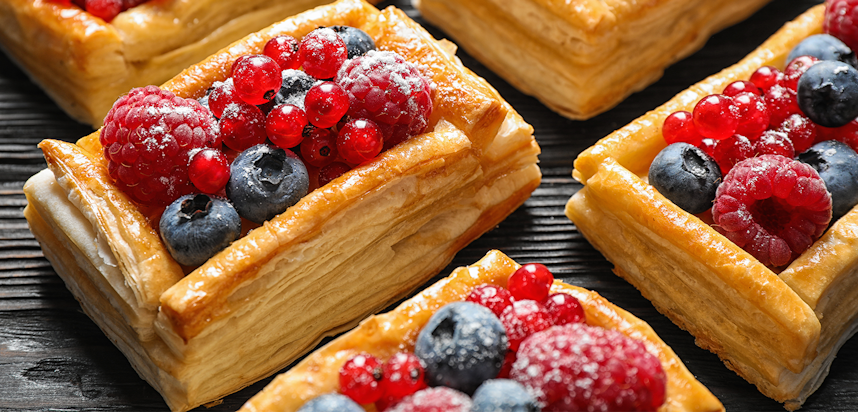
What is puff pastry?
French in origin, and sometimes referred to as pâte feuilletée, puff pastry is made by folding a block of butter into the centre of a flour and water dough that is repeatedly folded, turned and rolled out until the butter is incorporated into the it. When baked the butter will release its moisture to form even layers.
This process is known as leavening, and the result is a light, fluffy pastry, with the signature “puff” coming from the water in the butter causing the layers to expand.
Puff pastry is best for...
Pie lids, tarts, tartlets, beef Wellington, cheese straws, canapés - it’s one of the most versatile pastries around!
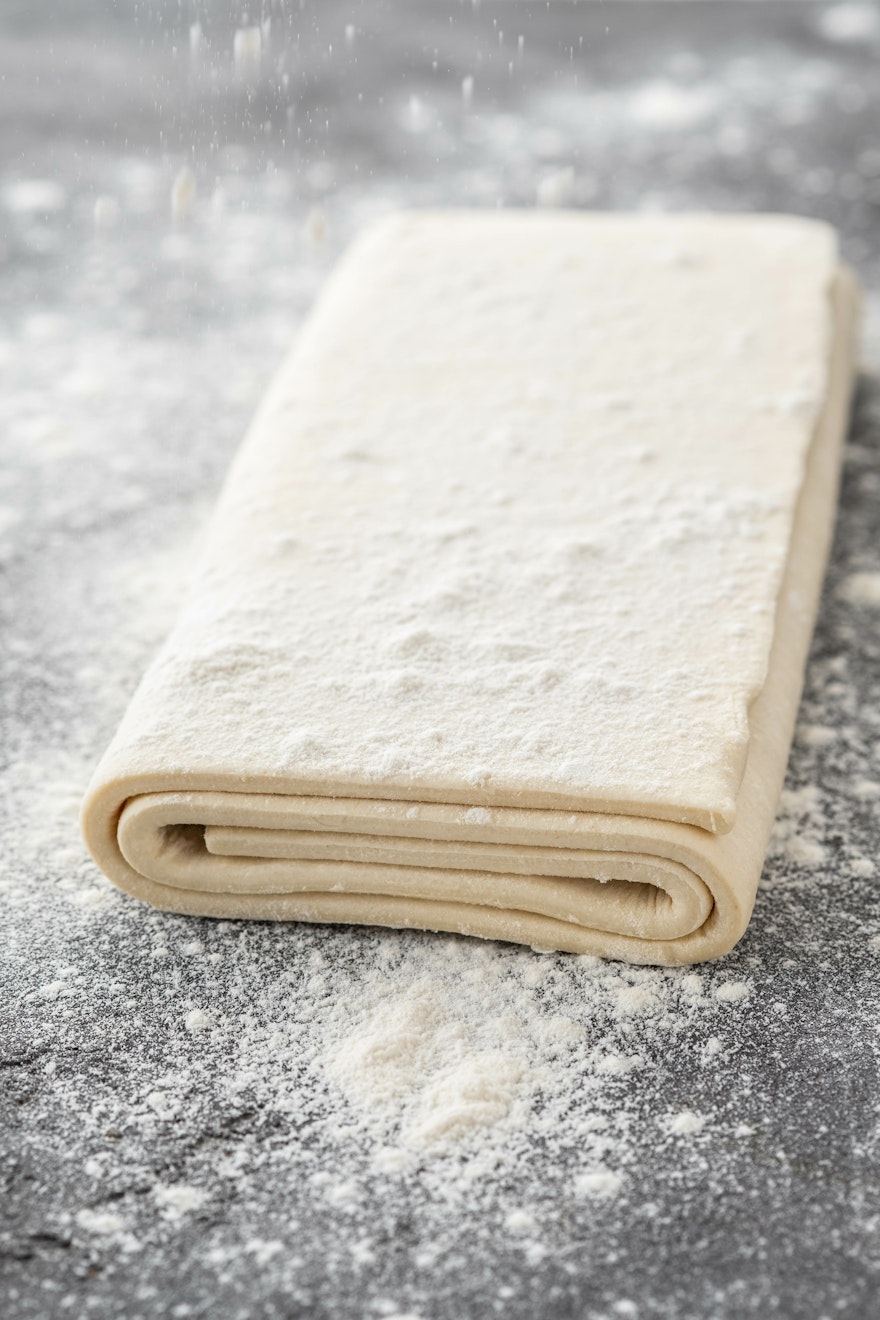
Puff pastry top tip...
Heat is crucial to puff pastry - it’s the evaporating of the water in the butter that causes the puff - so the oven must be hot enough. Make sure the oven has been preheated sufficiently - at least 15 minutes before the pastry goes in.
Shortcrust pastry
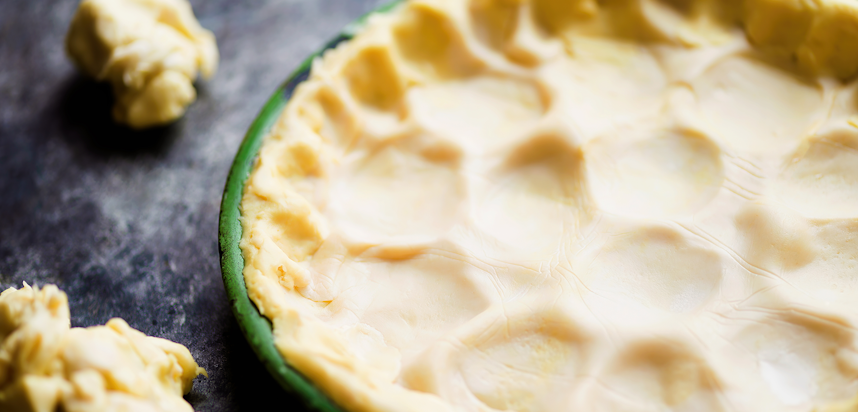
What is shortcrust pastry?
Shortcrust pastry is a versatile pastry with a crumbly, flaky texture, somewhere between flaky and hot water crust pastry but closer to the former.
The general principle with ingredients for a shortcrust pastry is two parts flour to one part fat (usually butter or lard). The butter is rubbed or cut into the flour (and a pinch of salt) and mixed with a small amount of cold or iced water to create a dough.
The idea is that each flour granule has been coated with fat, but that the mixture is cold enough to keep the fat and flour separate, so that when it is baked the moisture from the fat evaporates, creating a flaky crust.
Shortcrust pastry is best for...
Shortcrust pastry is used for many different dishes, thanks to its versatility. It’s often used as the base of a tart or quiche, and is also used for pies - both sweet like apple or savoury like chicken and mushroom.
You may also be interested in…
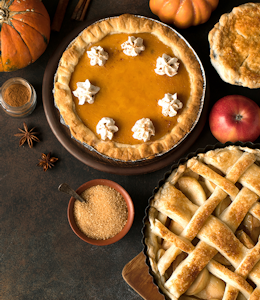
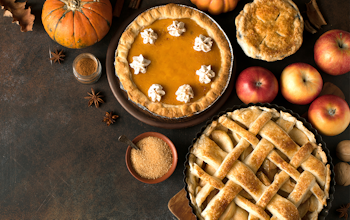
You may also be interested in…
Pie tips and how to make the perfect pastry
ReadShortcrust pastry top tip...
Do not overwork the dough - you should roll it as little as possible, because any sort of handling or warming will elongate the gluten strands in the flour and make the dough tough.
Suet crust pastry
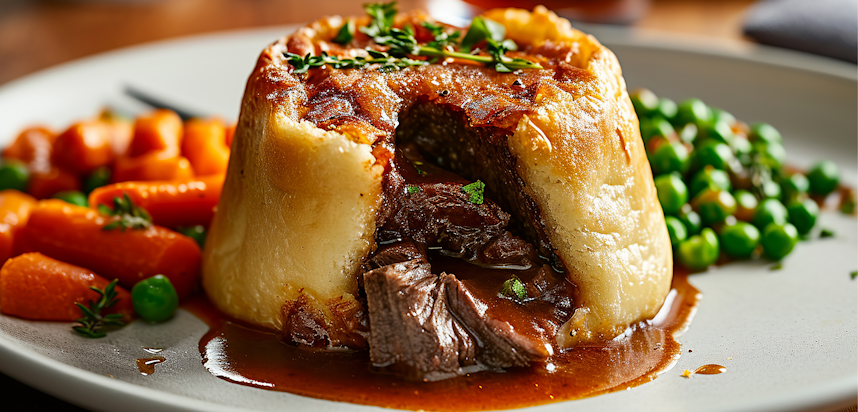
What is suet crust pastry?
Similar to shortcrust pastry but hardier and more easily stretched, suet crust pastry is an old-fashioned pastry that’s very easy to make. Like shortcrust pastry it uses ingredients of two parts flour to one part fat, but in this case the fat is suet, a saturated animal fat that is less greasy than butter. The shredded suet is introduced to the flour, thoroughly combined and mixed with water to form a dough. It is then chilled and rested before rolling out and baking.
Suet crust pastry is best for...
Suet crust pastry is the best choice for dumplings and, naturally, suet pudding. It can also be used for meat pies.
Suet crust pastry top tip...
Suet crust pastry needs more water in the mixture than other types of pastry, so don’t be afraid to keep adding more liquid (so long as it’s only a few drops at a time).
